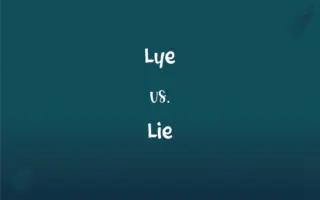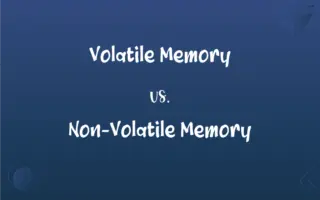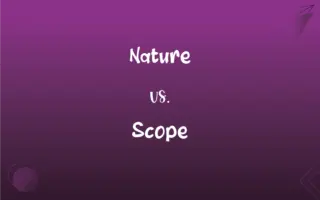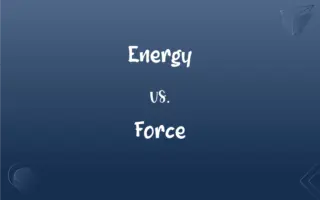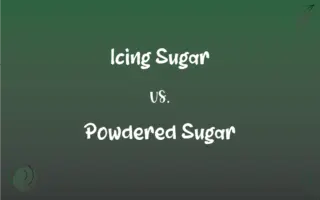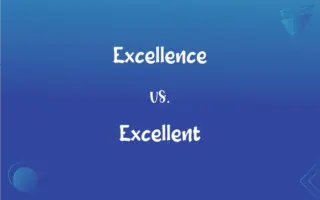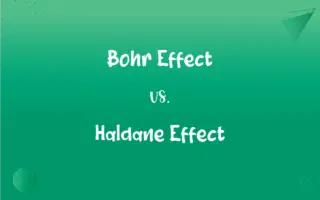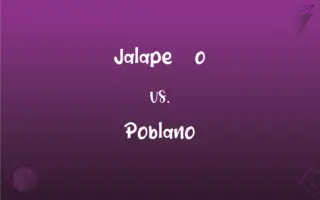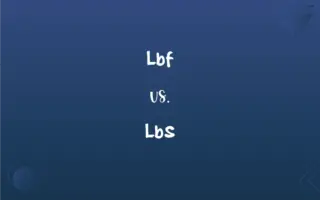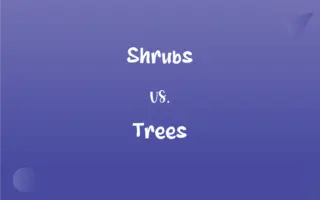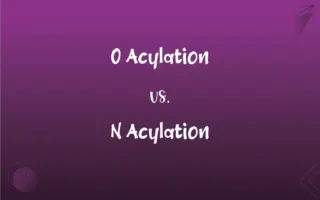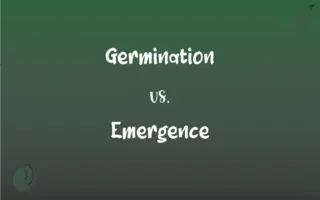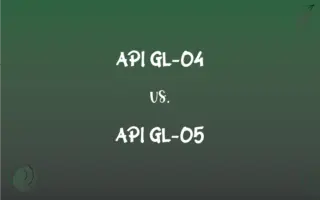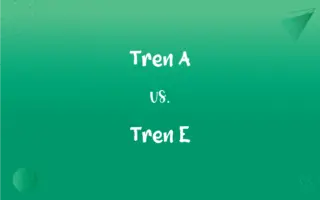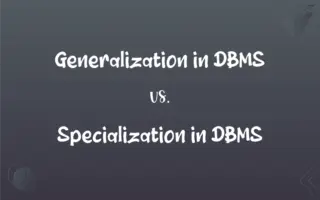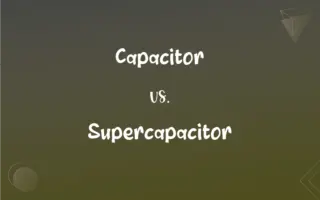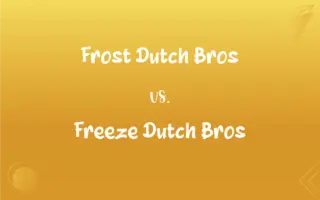Photosynthesis vs. Cellular Respiration: What's the Difference?
Edited by Aimie Carlson || By Harlon Moss || Updated on October 4, 2023
Photosynthesis converts light energy into chemical energy (glucose), releasing oxygen. Cellular respiration uses oxygen to break down glucose, producing energy (ATP) and releasing carbon dioxide.
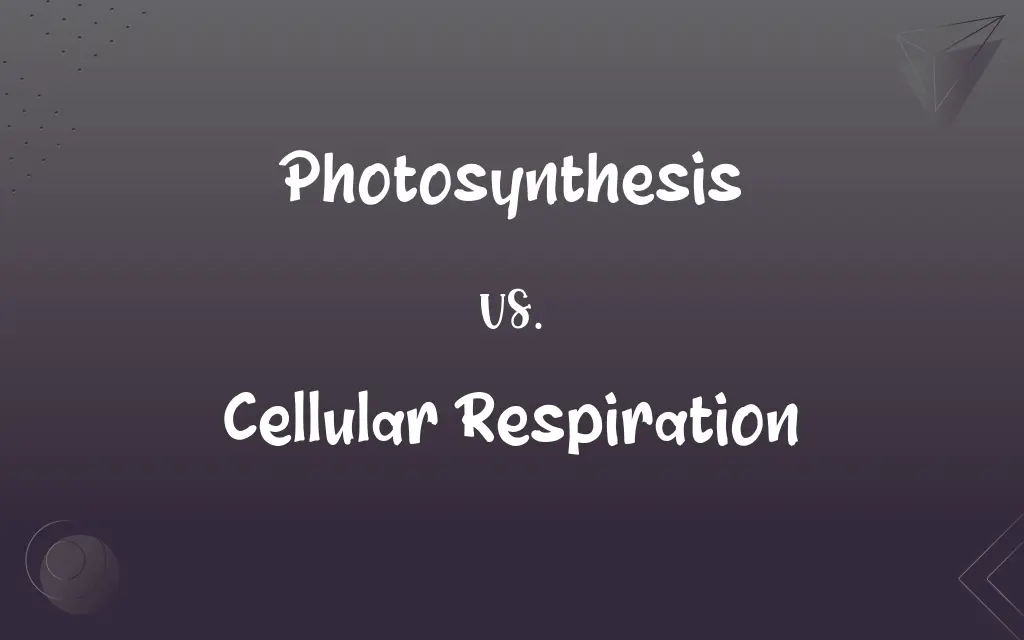
Key Differences
Photosynthesis is the process by which green plants, algae, and some bacteria transform light energy, primarily from the sun, into chemical energy in the form of glucose or other sugars. Cellular respiration, on the other hand, is the process by which cells break down these sugars to produce energy in the form of ATP, which powers cellular activities.
Photosynthesis primarily takes place in the chloroplasts of plant cells, where the green pigment chlorophyll captures light energy. This energy drives the conversion of carbon dioxide and water into glucose and oxygen. Cellular respiration predominantly occurs in the mitochondria of cells, where glucose is oxidized, using oxygen, to produce ATP, water, and carbon dioxide.
In essence, photosynthesis is an energy-storing process, capturing energy from sunlight and storing it as chemical energy in sugar molecules. Cellular respiration is an energy-releasing process, harnessing the energy stored in sugars to create ATP, which fuels the cell's functions.
The two processes are interconnected and complementary. The oxygen produced during photosynthesis is used in cellular respiration, while the carbon dioxide produced during cellular respiration is used in photosynthesis. Despite their differences, both photosynthesis and cellular respiration are fundamental to the cycle of energy transfer on Earth.
Comparison Chart
Primary Location
Chloroplasts in plant cells.
Mitochondria in cells.
ADVERTISEMENT
Main Purpose
Converts light energy to chemical energy.
Breaks down glucose to produce energy (ATP).
Inputs
Light, carbon dioxide, water.
Glucose, oxygen.
Outputs
Glucose, oxygen.
ATP, carbon dioxide, water.
Energy Flow
Energy-storing process.
Energy-releasing process.
Photosynthesis and Cellular Respiration Definitions
Photosynthesis
A procedure green organisms use to create glucose using sunlight.
Through photosynthesis, trees absorb carbon dioxide.
ADVERTISEMENT
Cellular Respiration
Cells' method of breaking down sugars to generate ATP.
Muscle cells undergo rapid cellular respiration during exercise.
Photosynthesis
Creation of carbohydrates in plants by using light.
Photosynthesis is crucial for the survival of most ecosystems.
Cellular Respiration
Oxidation of glucose in cells to release energy.
Without cellular respiration, cells would lack the energy to function.
Photosynthesis
The process by which plants convert light energy into chemical energy.
Photosynthesis enables plants to produce their own food.
Cellular Respiration
The process cells use to produce energy from glucose.
Cellular respiration is vital for cell functions.
Photosynthesis
Light-driven synthesis of sugar molecules in plants.
The rate of photosynthesis increases with more sunlight.
Cellular Respiration
Metabolic process where cells obtain energy from glucose.
Oxygen is essential for efficient cellular respiration.
Photosynthesis
Plants' method of capturing solar energy to form sugars.
The efficiency of photosynthesis varies among plant species.
Cellular Respiration
Conversion of biochemical energy in nutrients to ATP.
Cellular respiration ensures continuous energy supply.
Photosynthesis
The process in green plants and certain other organisms by which carbohydrates are synthesized from carbon dioxide and a source of hydrogen (usually water), using light as an energy source. Most forms of photosynthesis release oxygen as a byproduct.
Photosynthesis
(biology) Any process by which plants and other photoautotrophs convert light energy into chemical energy,
Photosynthesis
Principally, oxygenic photosynthesis, any process by which plants and algae convert water and carbon dioxide into carbohydrates and waste oxygen using solar energy.
FAQs
What is cellular respiration?
It's how cells produce energy from glucose.
Where does cellular respiration mainly take place?
In the mitochondria of cells.
What's the main purpose of photosynthesis?
To convert light energy to chemical energy.
Where does photosynthesis primarily occur?
In the chloroplasts of plant cells.
What is photosynthesis?
It's the process where plants convert light energy into chemical energy (glucose).
What are the key inputs for photosynthesis?
Light, carbon dioxide, and water.
What does photosynthesis produce?
Glucose and oxygen.
What drives the energy conversion in photosynthesis?
Light, primarily from the sun.
Why is cellular respiration essential?
It produces ATP, the cell's energy currency.
How are photosynthesis and cellular respiration related?
They're interconnected; one's outputs are the other's inputs.
Why is ATP important?
It powers various cellular activities.
What role does chlorophyll play in photosynthesis?
It captures light energy.
What does cellular respiration use as inputs?
Glucose and oxygen.
What are the outputs of cellular respiration?
ATP, carbon dioxide, and water.
Are photosynthesis and cellular respiration cyclic processes?
Yes, they form an energy cycle on Earth.
Is photosynthesis only observed in plants?
No, it's also seen in algae and some bacteria.
Can photosynthesis occur without light?
No, light is essential for photosynthesis.
Does cellular respiration always need oxygen?
Aerobic respiration requires oxygen, but there are anaerobic forms too.
How is glucose utilized in cellular respiration?
It's oxidized to produce ATP.
Do all organisms undergo cellular respiration?
Most organisms do, but the process can vary.
About Author
Written by
Harlon MossHarlon is a seasoned quality moderator and accomplished content writer for Difference Wiki. An alumnus of the prestigious University of California, he earned his degree in Computer Science. Leveraging his academic background, Harlon brings a meticulous and informed perspective to his work, ensuring content accuracy and excellence.
Edited by
Aimie CarlsonAimie Carlson, holding a master's degree in English literature, is a fervent English language enthusiast. She lends her writing talents to Difference Wiki, a prominent website that specializes in comparisons, offering readers insightful analyses that both captivate and inform.
